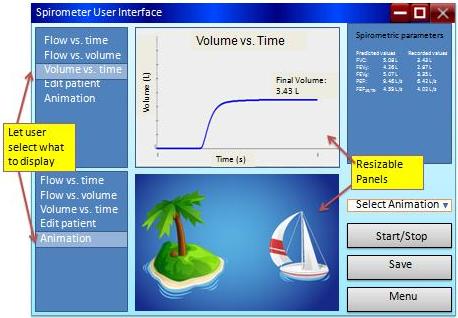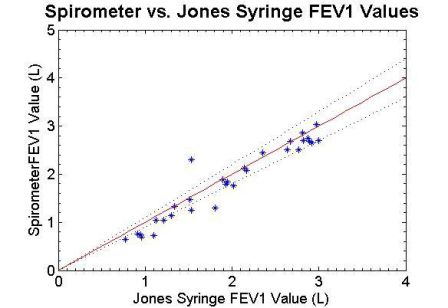Low-cost, open-source spirometer
Project Overview
The objective of this project, started by David Van Sickle in January 2009, is to develop an open source, low cost, and clinically functional spirometer that measures lung flows and volumes. We envision a first generation device that connects to a computer via a USB port and guides and coaches patients through the testing using digital audiovisual clips.
As the test is performed, a combination of client and server software would graphically display flow and volume data, monitor and evaluate the quality of the maneuver, and instruct the subject when his/her performance needs to be corrected. The software would also carry out some rudimentary analysis and interpretation using algorithms available from the American Thoracic Society.
The idea is to develop a tool that would be widely affordable and would standardize pulmonary function measurements by delivering the same instruction and coaching across sites for the first time.
Visit our Spring 2009 , Summer 2009 , and Fall 2009 pages and openspirometry.org for details of previous accomplishments
Team Picture

Images


Files
- Product Design Specifications (February 22, 2010)
- Midsemester Presentation (March 9, 2010)
- Outreach Presentation (April 29, 2010)
- Final Poster Presentation (May 4, 2010)
- Final report: Journal article (May 5, 2010)
- Outreach Report (May 9, 2010)
Contact Information
Team Members
- Jeremy Glynn - Team Leader
- Jeremy Schaefer - Communicator
- Andrew Bremer - BSAC
- Andrew Dias - BWIG
Advisor and Client
- Mitchell Tyler - Advisor
- David Van Sickle - Client
Related Projects
- Spring 2010: Low-cost, open-source spirometer
- Fall 2009: Low-cost, open-source spirometer
- Spring 2009: Open-source, low-cost, web-guided spirometer
